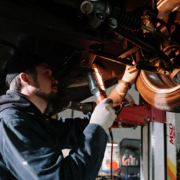Do you want to know what bad vvt solenoid symptoms are? You could be having broken valvetrain and related cooling problems on your Cummins diesel engine. VVT stands for Variable Valve Timing and is a type of valve train that is used in many modern vehicles. When we talk about vvt solenoid symptoms, it’s when your car will have broken vvt solenoid. This could be the cause of many other issues with your engine and it has to be fixed immediately.
What are bad vvt solenoid symptoms? I’m talking about the performance of a valve when you try to start your car. Let me explain. The shaft that connects the solenoid and a pulley is supposed to spin freely and produce a large amount of torque to turn a coupling that connects the engine to the transmission. If it doesn’t, then you could have bad vvt solenoid symptoms.
Bad vvt solenoid symptoms may be caused by a number of factors. This article will help you identify and diagnose the source of your issues.
Table of Contents
How do I know if my VVT is bad?
It’s not always easy to figure out if you have a bad VVT, but there are some common symptoms that are easy to identify. If your check engine light is on or it’s consistently taking a long time to start when you turn the key, then your VVT may be malfunctioning. If your car fails to pass emissions testing, or its emissions are too high, this is another indication that something is wrong with your VVT.
It’s not unusual for a vehicle to have a failing VVT, especially in high-mileage areas. You may need to replace the VVT if it causes reduced engine performance, or if the car significantly overheats.
A faulty VVT can cause a wide range of problems, but it usually starts with hesitation or stalling during acceleration. A VVT that loses synchronization will also cause uneven scavenging when engaged or not engaged.
FAQs
What is bad vvt solenoid?
The valve timing may not advance or retard as required if the VVT solenoid is not functioning properly. The engine may consequently display performance issues, such as jerky running and slow acceleration.
What happens when the VVT solenoid goes bad?
The entire system may be affected by a failing VVT solenoid, which might cause the intake and exhaust valves to open and close improperly. The fuel economy often suffers greatly as a result.
How much does it cost to replace a VVT solenoid?
Depending on whether you do the replacement yourself or have a mechanic do it, the price range for a new VVT solenoid is $50 to $400.
Can you drive with a bad VVT solenoid?
If Your VVT Solenoid Breaks, Can You Drive? Even though a faulty VVT solenoid may technically allow you to continue driving, the problem can harm other components like the VVT actuator. As a result, you should take care of the problem very away.








Comments